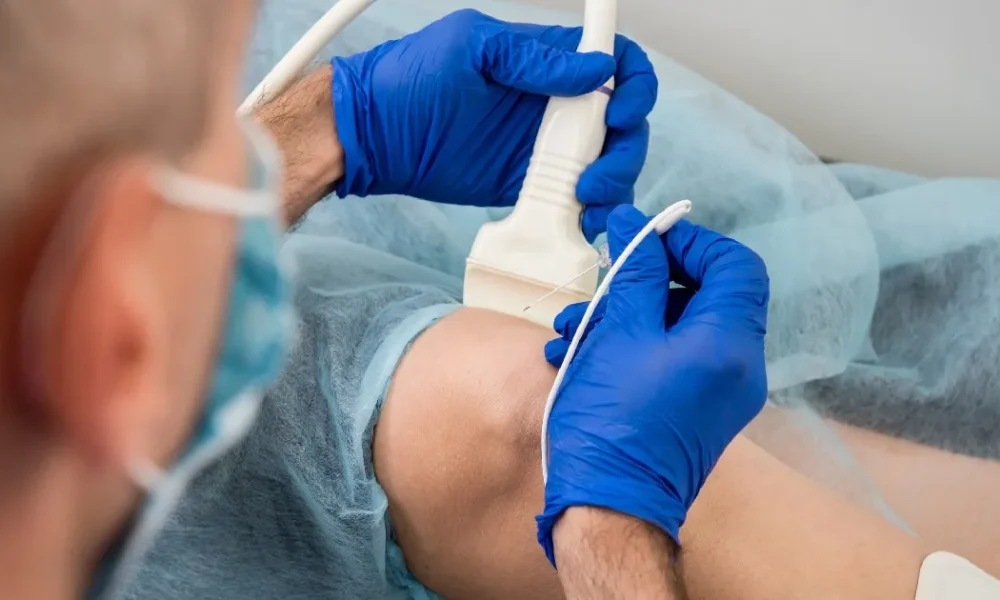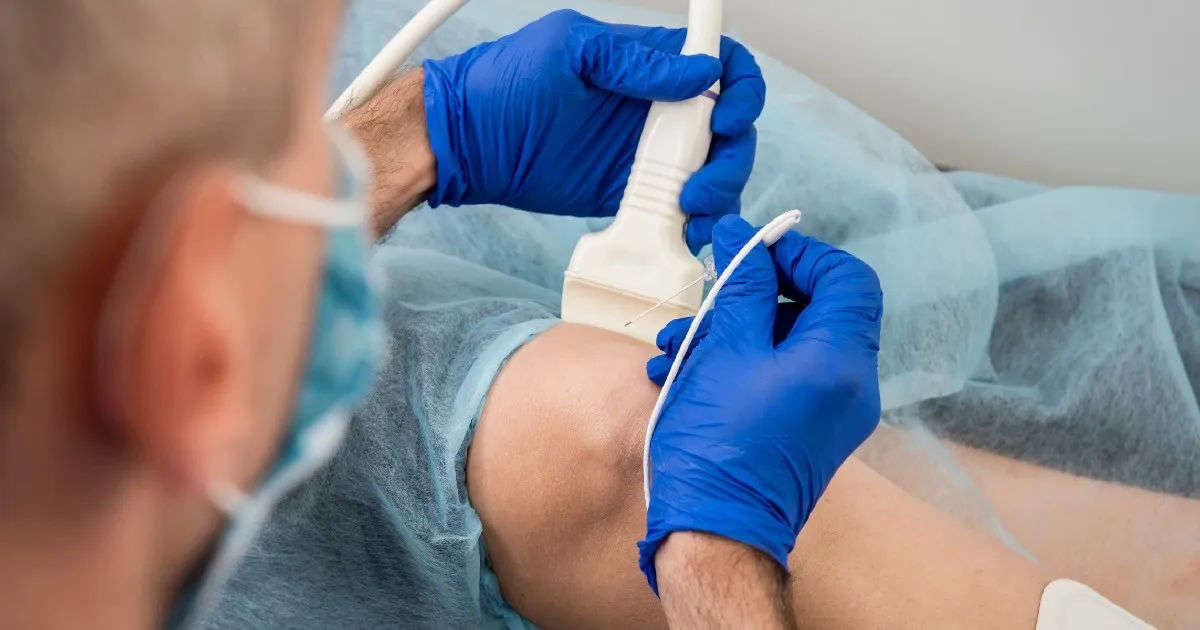Table of Contents
Living with chronic pain can be draining. When simple movements start to hurt, sleep becomes restless, and treatments no longer seem to work, it’s normal to look for something that can actually make a difference. Radiofrequency ablation (RFA) is one of today’s most reliable, non-surgical options for lasting pain relief. It helps by targeting specific nerves that send pain signals, offering comfort without the need for major surgery or long recovery times.
This step-by-step guide is for anyone curious about how the RFA procedure works and what to expect at each stage. Whether you’re exploring radiofrequency ablation, comparing pain management options, or helping a loved one understand the process, this guide aims to clarify and simplify everything.
Many people who turn to RFA share similar concerns. They’ve dealt with ongoing pain that hasn’t improved with therapy or medication. They want an option that doesn’t involve surgery. Some feel unsure about whether RFA is safe or effective, or they’ve had trouble finding a trusted local provider. Others simply want to know how the procedure works and what recovery looks like.
At Alta Pain Physicians, patients often request honest and straightforward information before making a decision. This guide walks through every stage of minimally invasive RFA, from consultation to recovery, so you can see how this treatment helps manage pain safely and effectively.
Step 1: Consultation and Evaluation
Every successful treatment begins with the proper diagnosis. Your first visit involves a thorough evaluation with your pain specialist. During this stage, your doctor reviews your medical history, discusses your symptoms, and examines your previous treatments to determine the best course of action.
You may undergo diagnostic tests such as imaging scans or a nerve block injection to confirm which nerves are causing your pain. This step is crucial because radiofrequency ablation targets specific nerves. Only patients who respond well to a temporary nerve block are typically considered good candidates for the RFA procedure.
The goal here is simple: ensure that RFA is the right fit for your condition before moving forward.
Step 2: Preparation Before the Procedure
Once you’re scheduled for RFA, you’ll receive detailed pre-procedure instructions. These may include fasting for a few hours before the appointment and reviewing your current medications. Your healthcare team will conduct safety checks to ensure everything is ready and that you fully understand what will happen.
When you arrive at the clinic, you’ll check in, sign a consent form, and change into a medical gown. The staff will make sure you’re comfortable and relaxed before the procedure begins. Since RFA is minimally invasive, general anesthesia isn’t required; most patients stay awake with mild sedation or local numbing.
Step 3: Positioning and Local Anesthesia
Next, you’ll be guided into the correct position on the treatment table, depending on the location of your pain. For example, if the RFA targets your lower back, you’ll likely lie face down.
Your doctor will clean the area with an antiseptic solution and apply a local anesthetic to numb the skin and surrounding tissue. This helps ensure comfort throughout the RFA procedure. You may feel light pressure but not pain.
The purpose of this step is to keep you relaxed and pain-free as the treatment area is prepared for the next phase of the procedure.
Step 4: Needle Placement and Imaging Guidance
Precision matters in RFA. The doctor uses advanced imaging, usually X-ray (fluoroscopy) or ultrasound, to guide a thin, specialized needle to the exact location of the affected nerve.
This step is done slowly and carefully to ensure accuracy. The imaging allows your doctor to visualize the placement in real-time, ensuring the needle reaches the correct point without affecting nearby tissues.
This precision is what makes radiofrequency ablation both safe and effective. It allows the physician to treat only the targeted nerve fibers responsible for pain, leaving the surrounding areas unharmed.
Step 5: Testing the Target Nerve
Before applying any heat, your doctor performs a small test to confirm the correct nerve is being targeted. This involves sending a light electrical current through the needle, which may create a brief tingling sensation or mild muscle twitch.
This step ensures that the treatment focuses exactly where it’s needed. Suppose the test confirms the correct nerve, the doctor proceeds. If not, adjustments are made before continuing. This level of precision helps improve the long-term success rate of pain relief RFA.
Step 6: Applying Radiofrequency Energy
Once the target nerve is confirmed, the real treatment begins. The doctor sends controlled heat through the needle using radiofrequency energy. This heat gently disrupts the nerve’s ability to send pain signals to the brain.
Each treatment site takes only a few minutes to complete. If multiple nerves are causing pain, the process is repeated for each one. Despite its technical nature, patients usually remain comfortable throughout the procedure, thanks to the numbing effect and careful monitoring.
This step is what gives RFA its power; it doesn’t fix the underlying structure, but it “turns off” the pain signals at their source.
Step 7: Completing the Procedure
After all targeted nerves have been treated, the doctor removes the needles and cleans the area. A small bandage may be placed over the injection site. Since this is a minimally invasive RFA procedure, stitches aren’t necessary, and the recovery starts almost immediately.
You’ll spend a short time in the recovery room while your vital signs are monitored. Most patients are ready to go home within one to two hours after discharge. Because sedation may still be wearing off, it’s best to arrange for someone to drive you home.
The entire RFA procedure typically takes 30 to 90 minutes from start to finish, depending on the number of nerves being treated.
Step 8: Recovery and Aftercare
After treatment, some patients may experience mild soreness or swelling at the site, which typically subsides within a few days. Over-the-counter pain medication and gentle stretching can help ease any discomfort.
Most people return to light activities the same day or the next, depending on how they feel. It’s important to avoid strenuous activity for a short period as your body recovers.
Pain relief typically begins within one to three weeks as the nerves become less active. The results of radiofrequency ablation can last anywhere from six months to two years. When the nerves eventually regenerate, the procedure can be repeated if needed.
The aftercare process is designed to help you recover quickly while maximizing the long-term benefits of pain relief RFA.
Finding Radiofrequency Ablation
If you’re in or near Sandy, UT, and Bountiful, UT, you don’t need to travel far for expert care. Alta Pain Physicians offers radiofrequency ablation in Sandy, UT, and Bountiful, UT, performed by experienced pain specialists who prioritize precision and patient comfort.
The clinic offers personalized evaluations to determine if RFA is the right fit for your specific pain condition. They also provide additional interventional pain treatments for spine and joint-related conditions, ensuring you receive a personalized plan that truly meets your specific needs.
Your Next Step to Pain Relief with RFA
Chronic pain doesn’t have to control your life. The radiofrequency ablation procedure offers a clear, step-by-step path to relief, avoiding major surgery and the need for lengthy recovery times. From consultation to recovery, every stage of RFA is designed with your comfort and safety in mind.
If you’ve been living with persistent pain that hasn’t improved with other treatments, this could be the turning point. Consult with the specialists at Alta Pain Physicians to determine if minimally invasive RFA is the right treatment for you.
Book Your Consultation Today and take the first step toward lasting pain relief.




